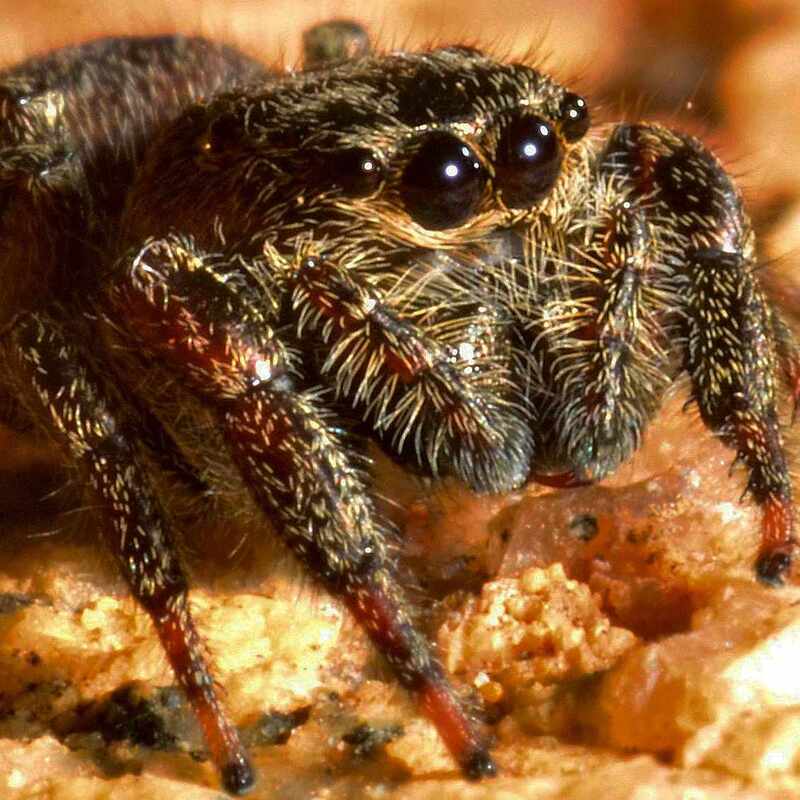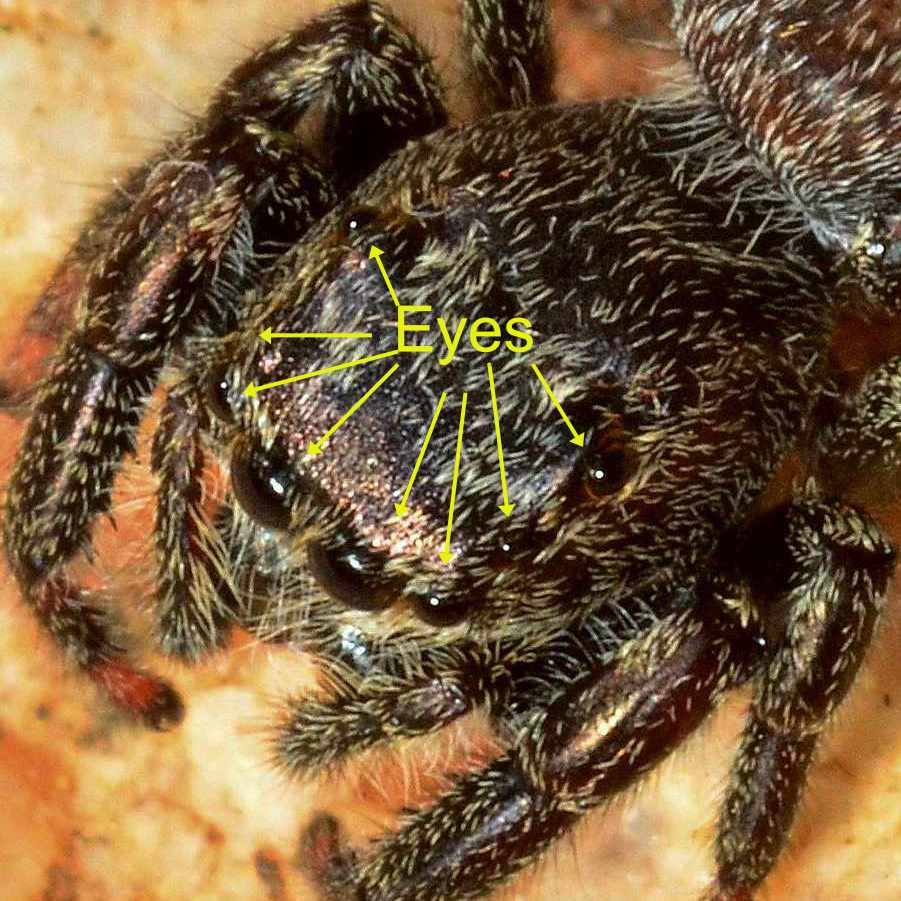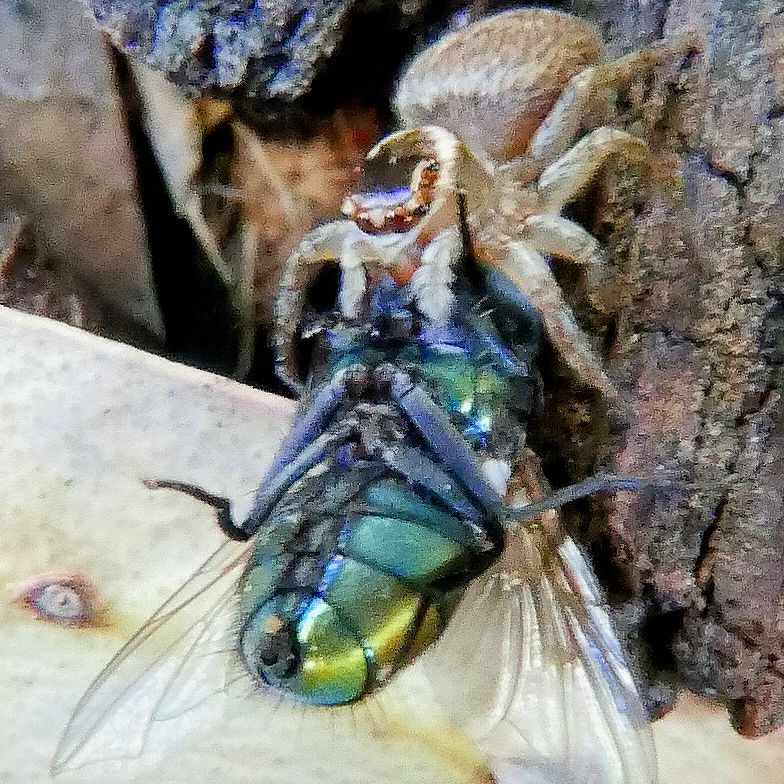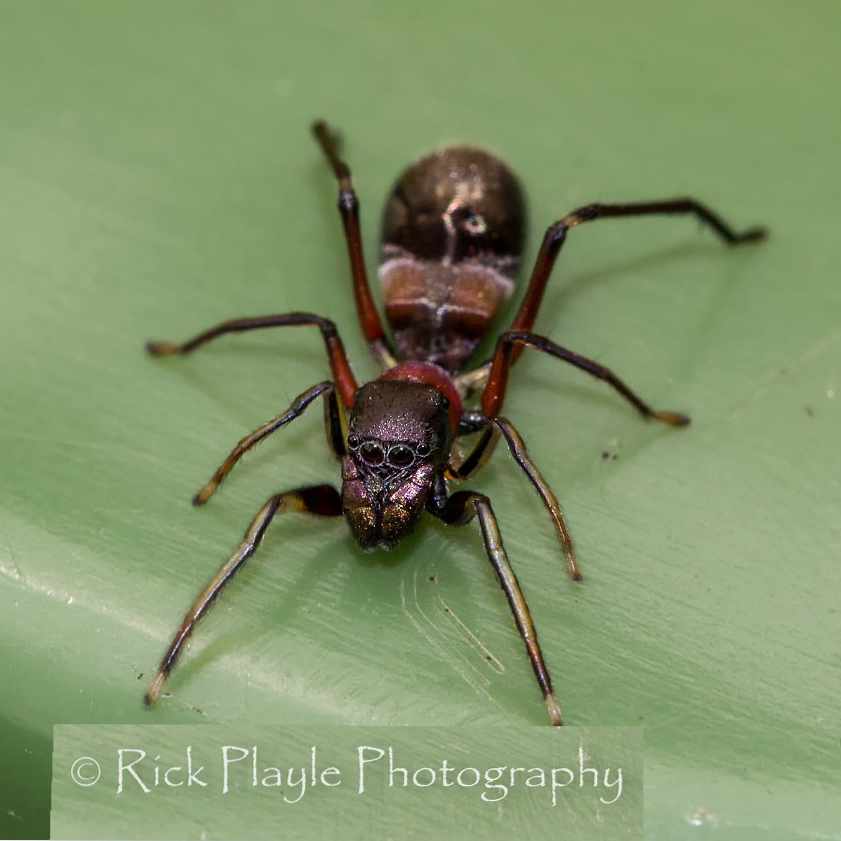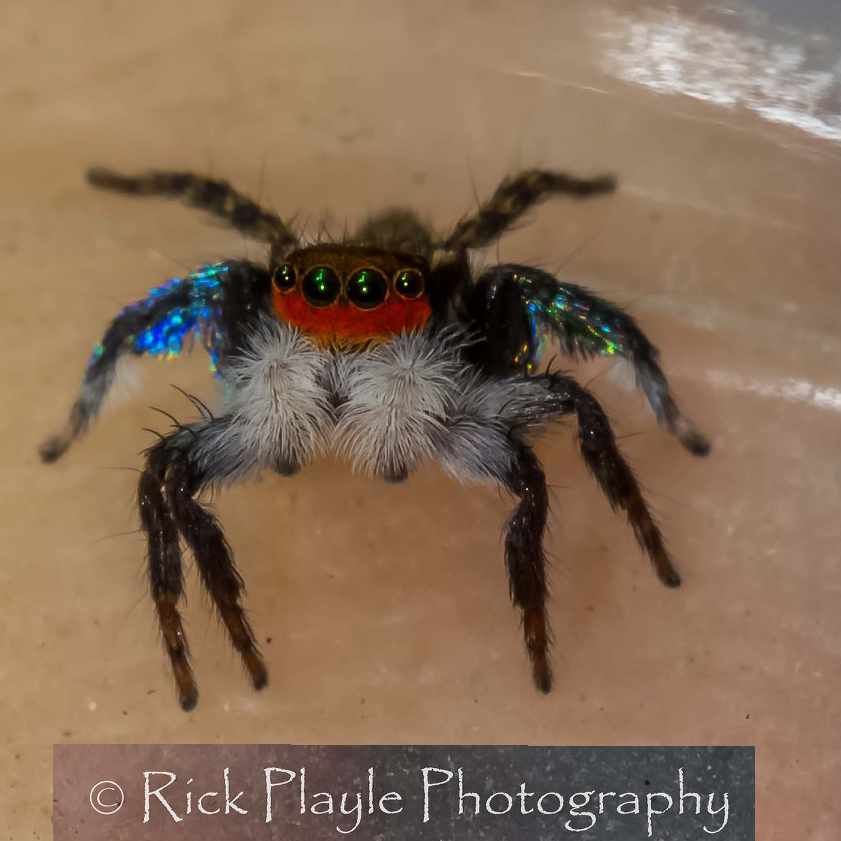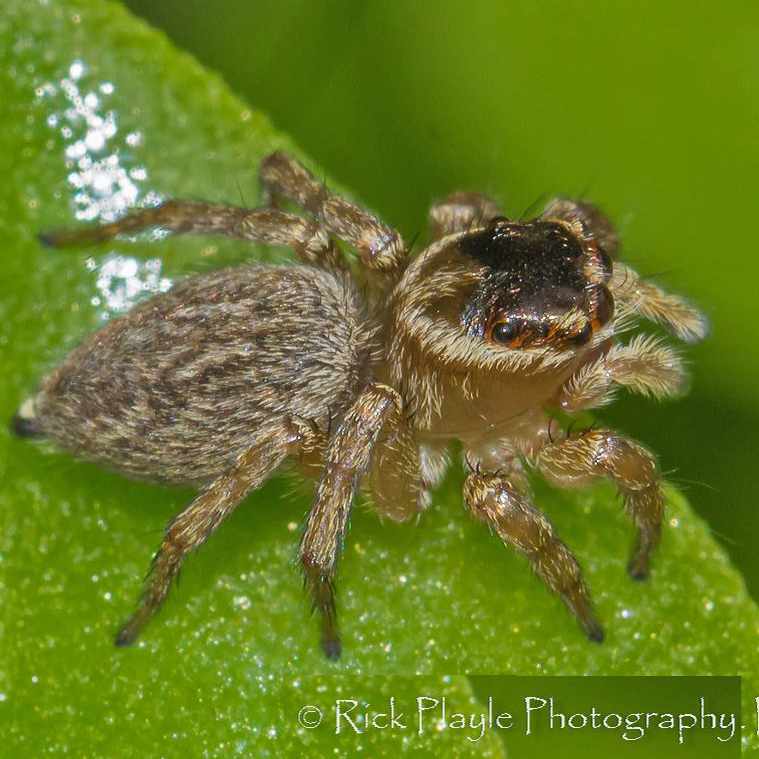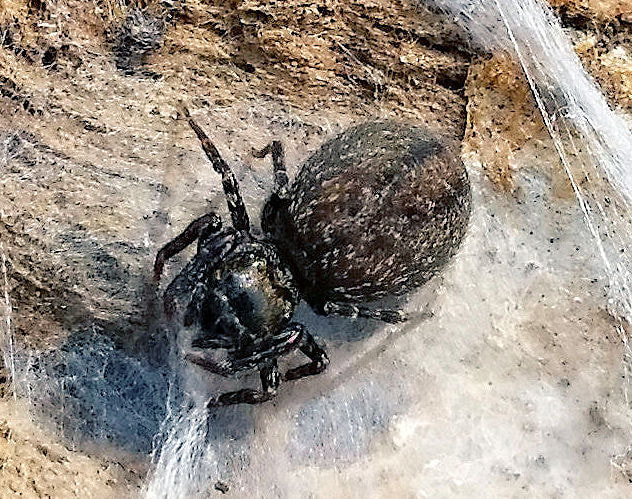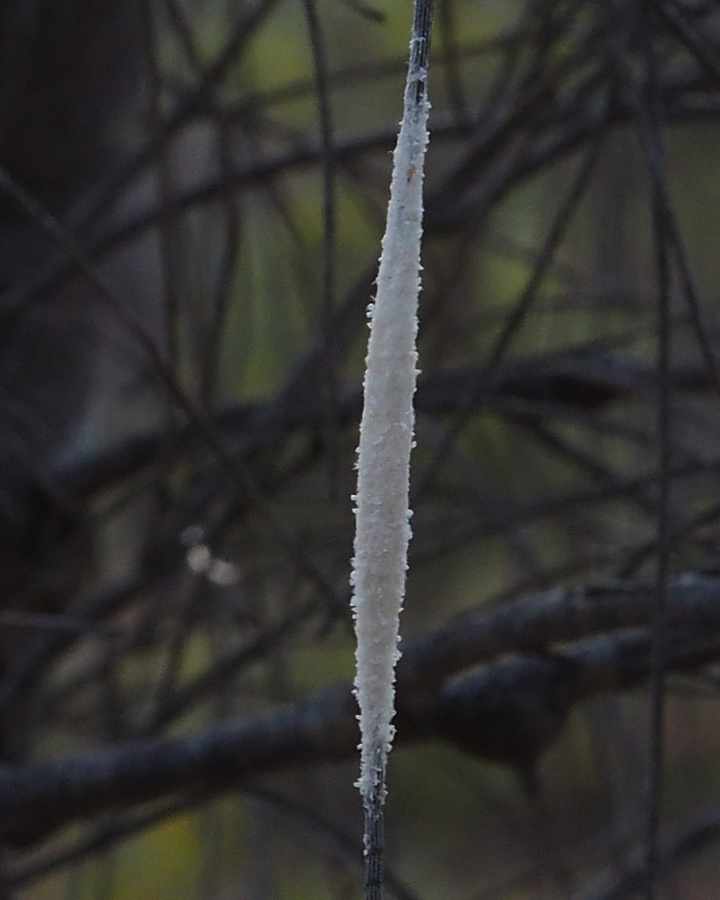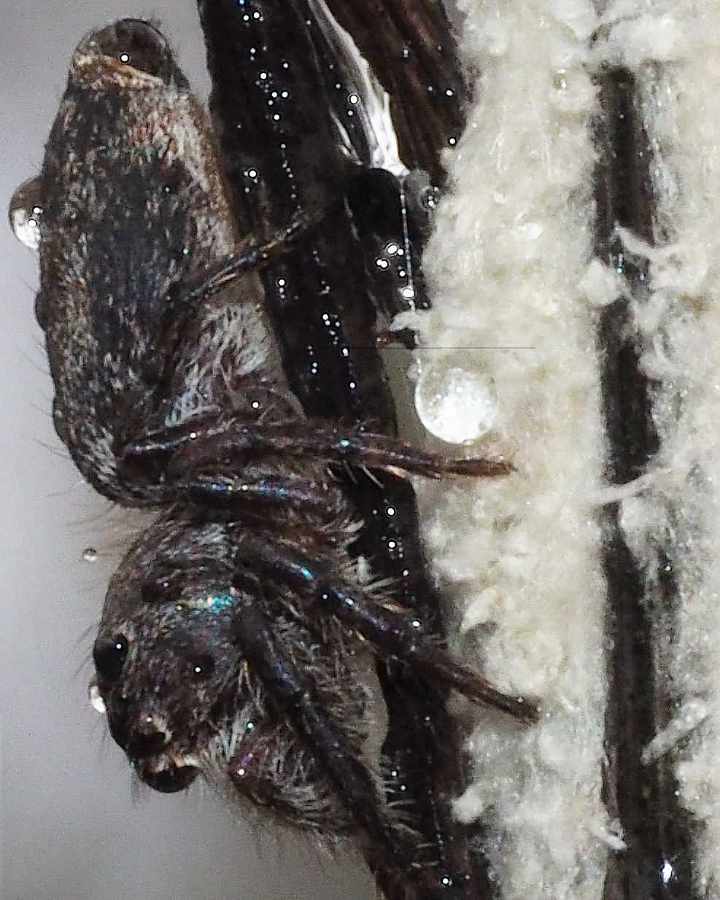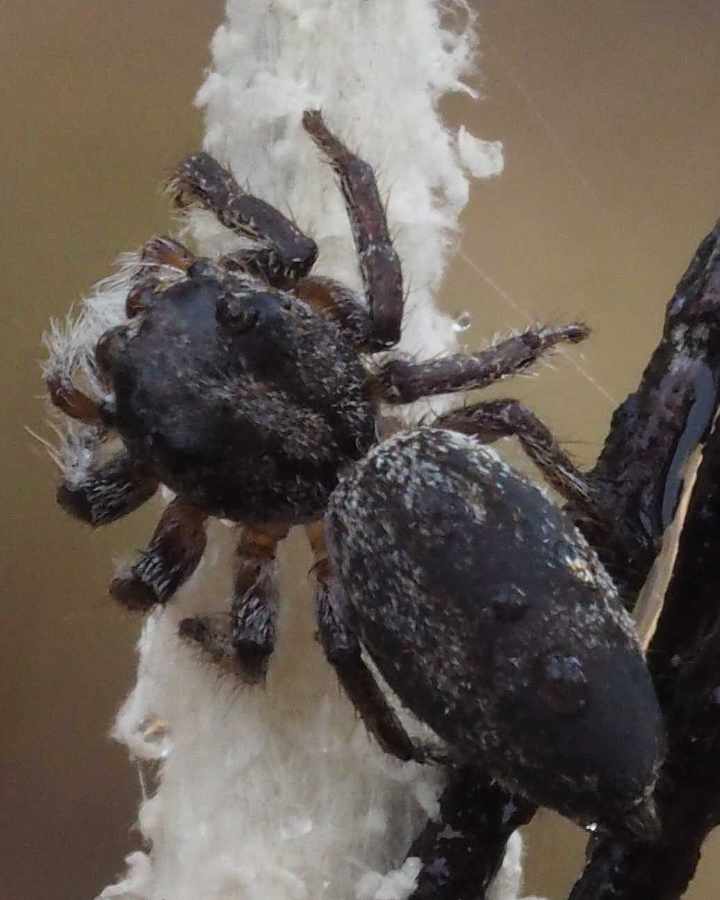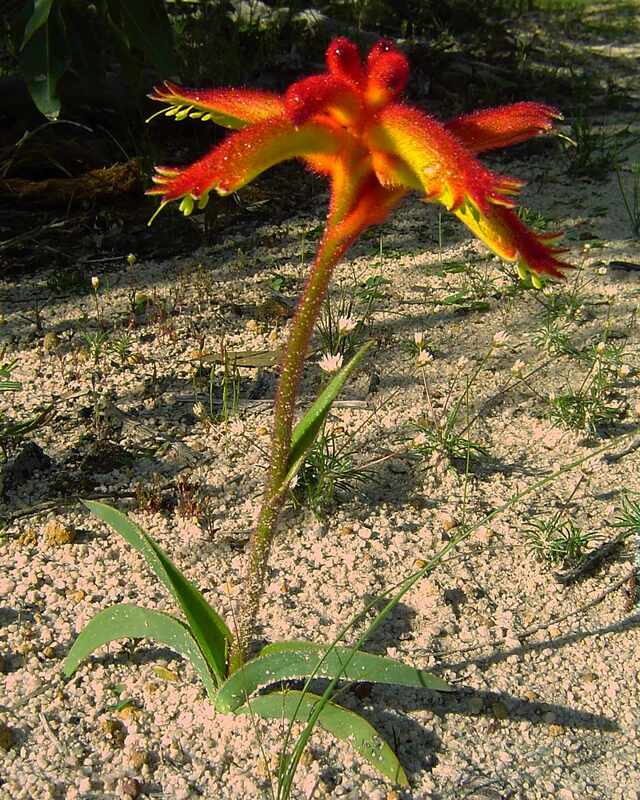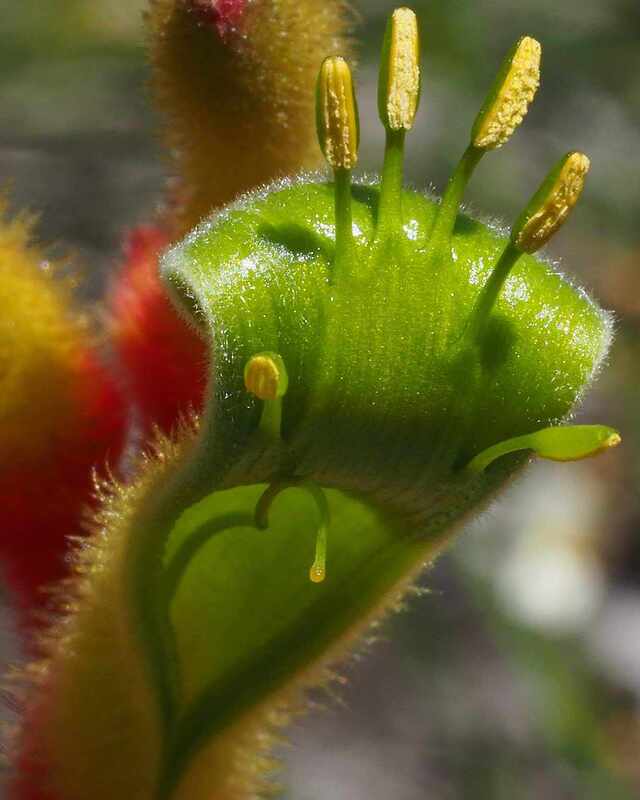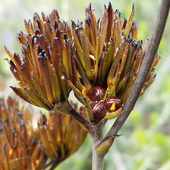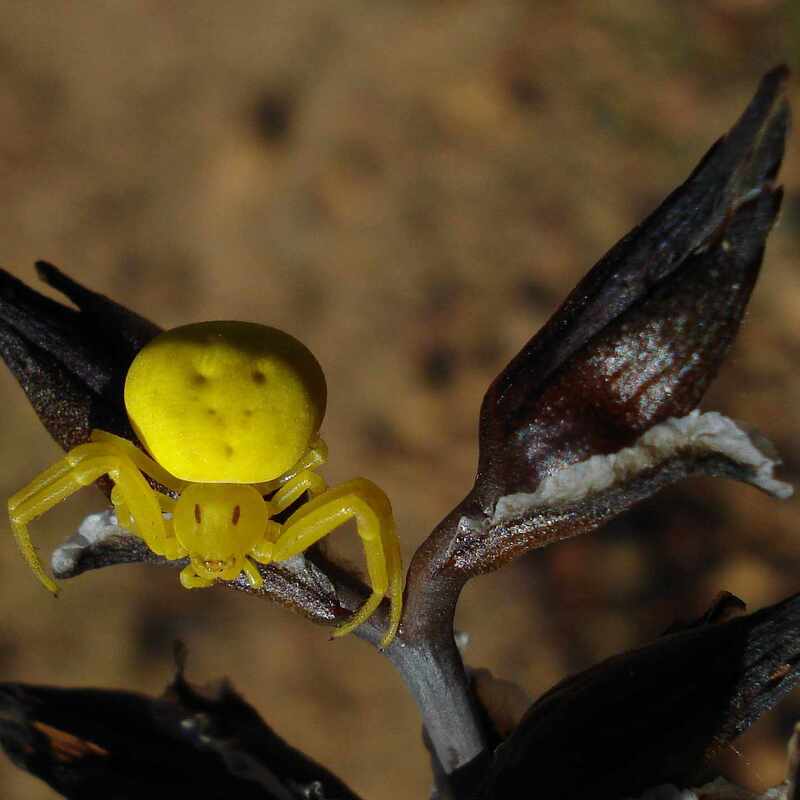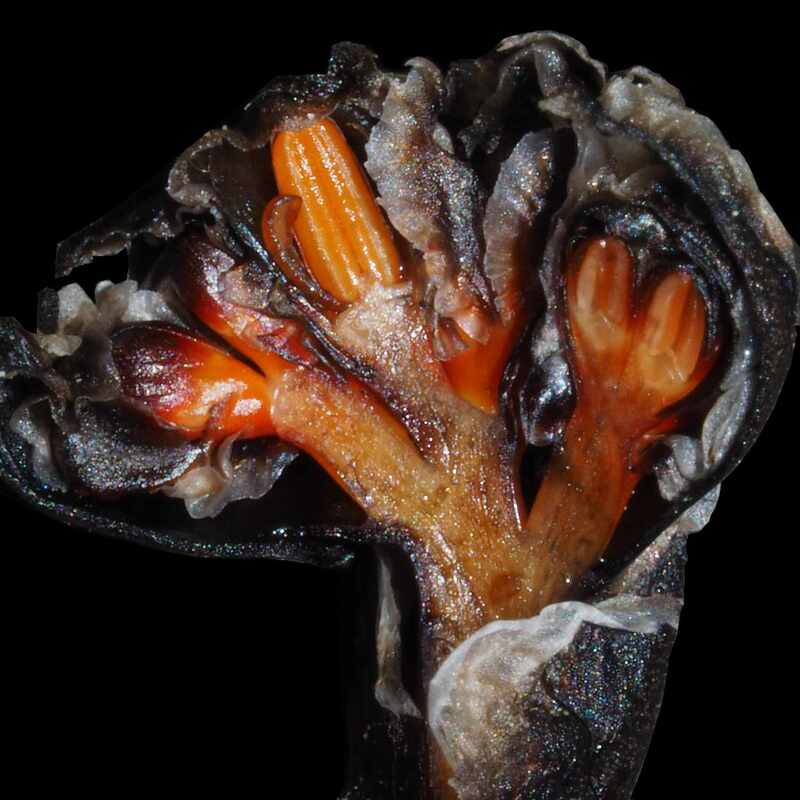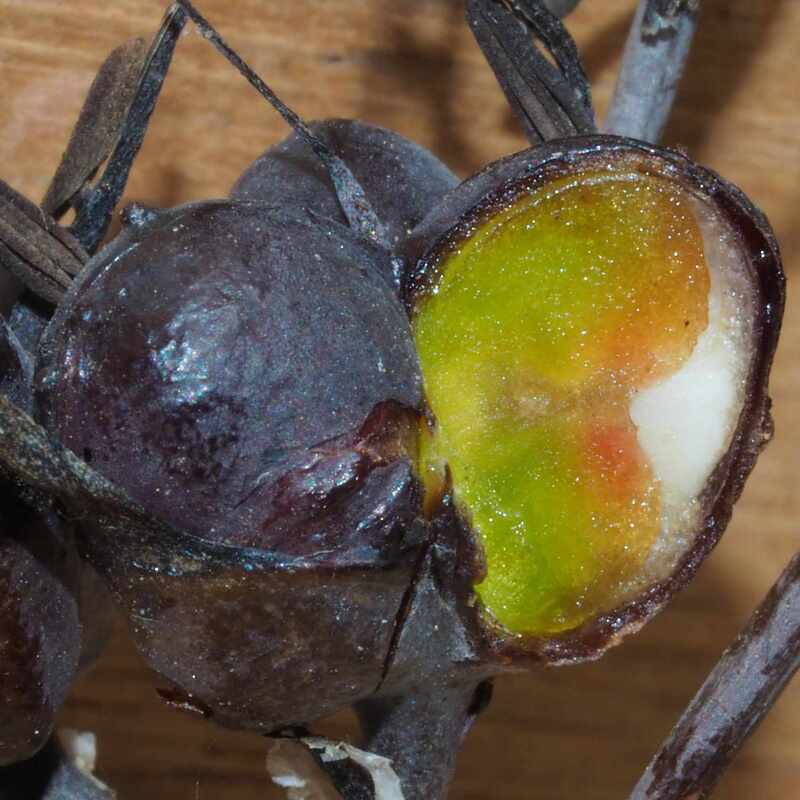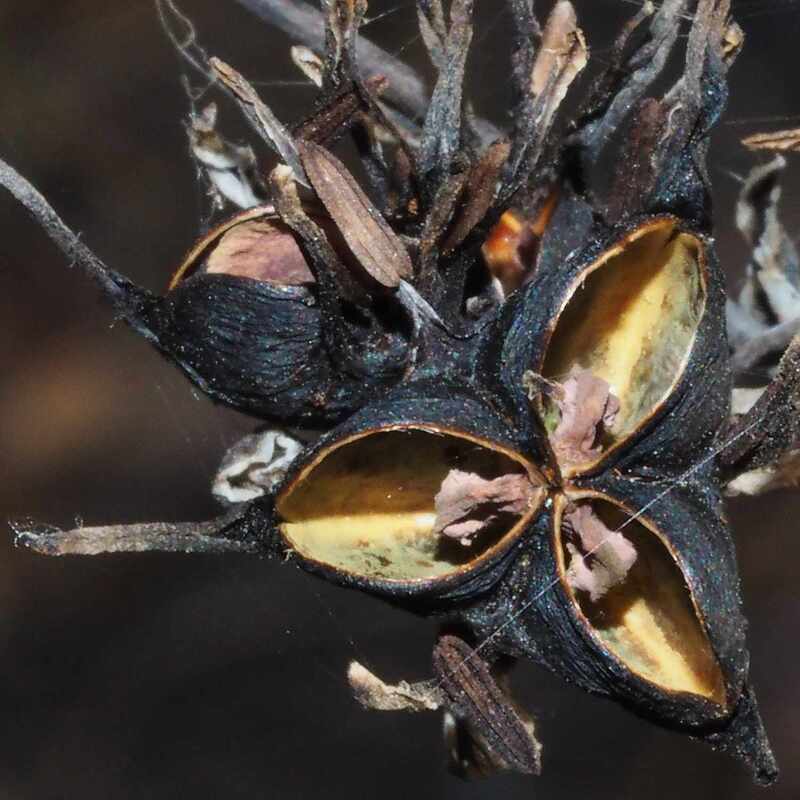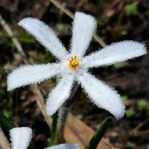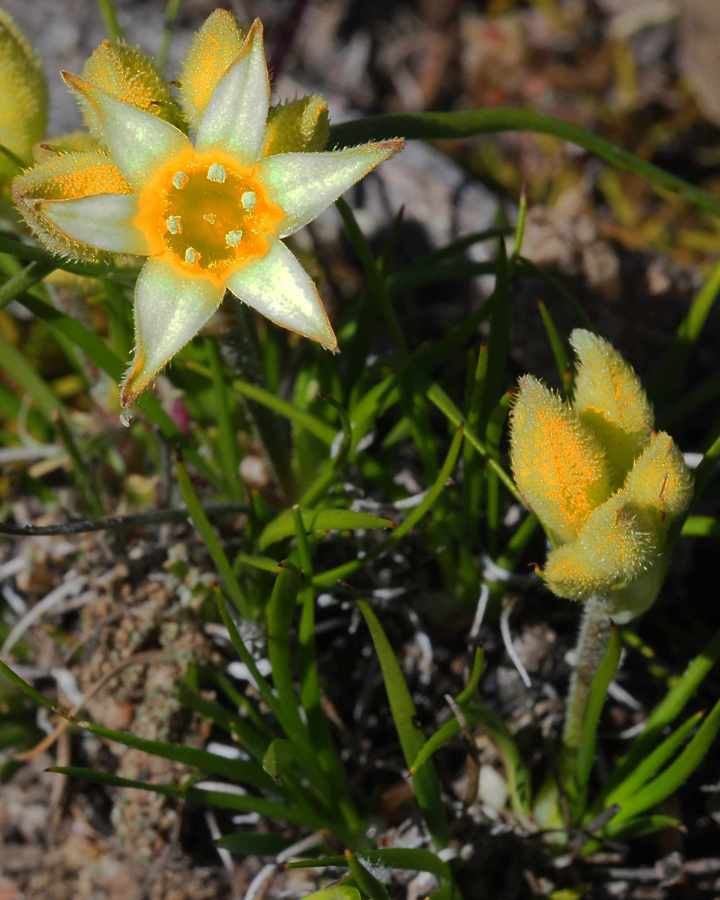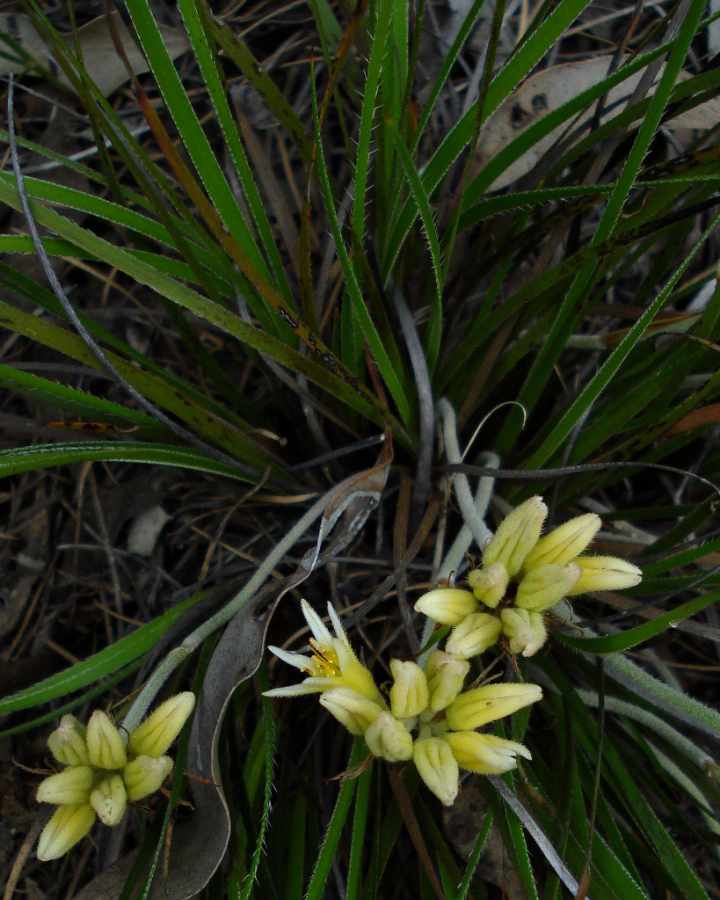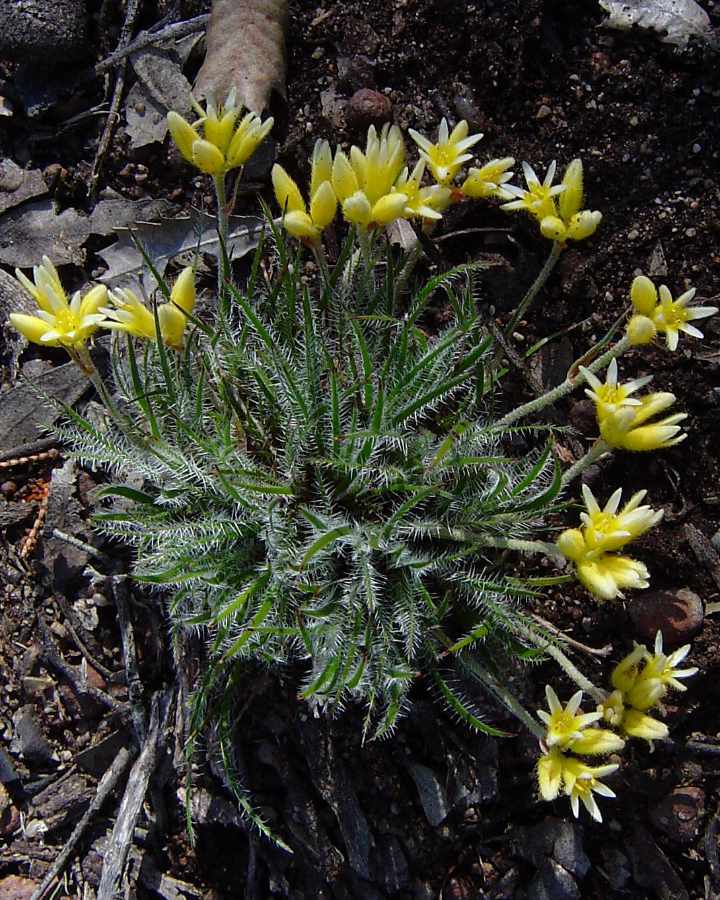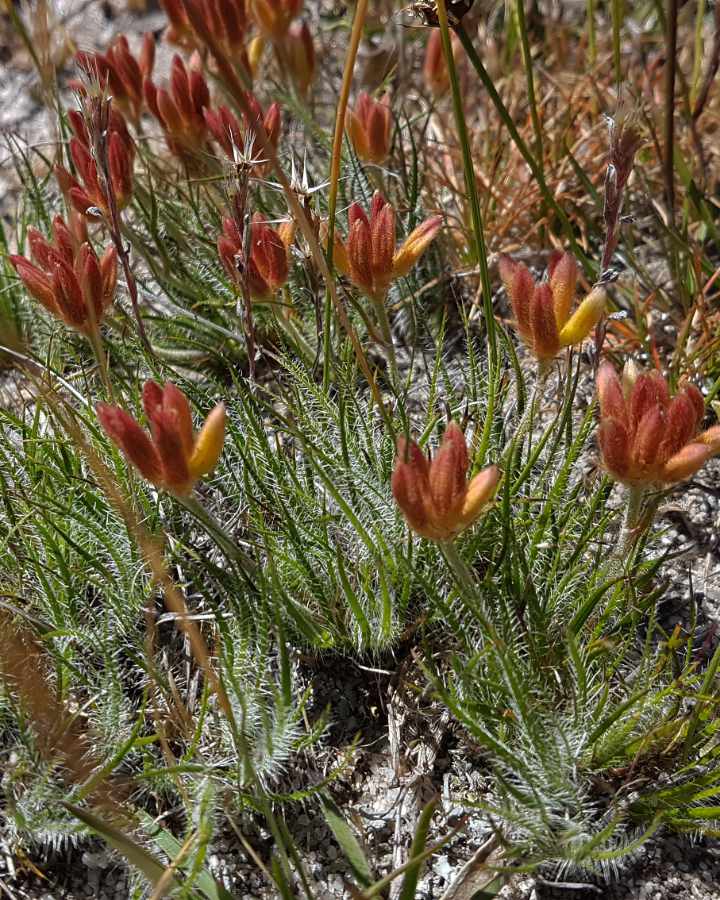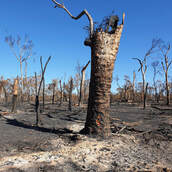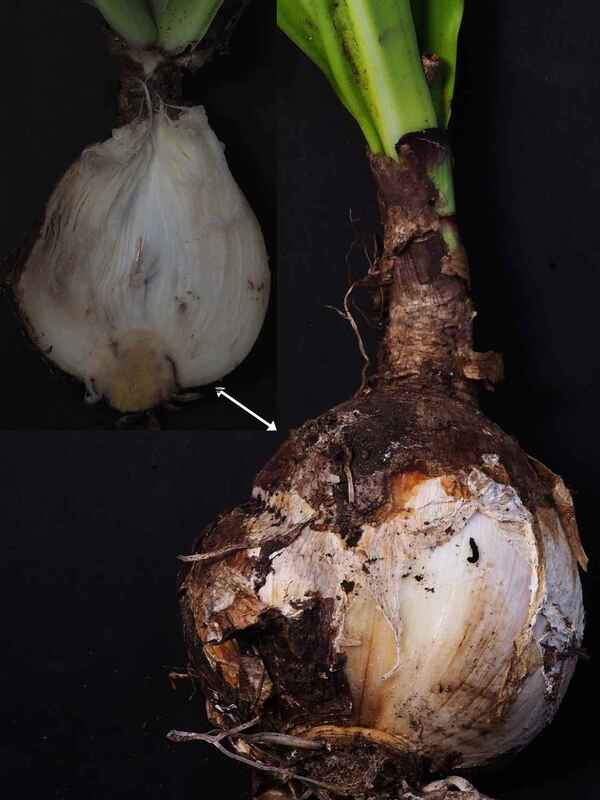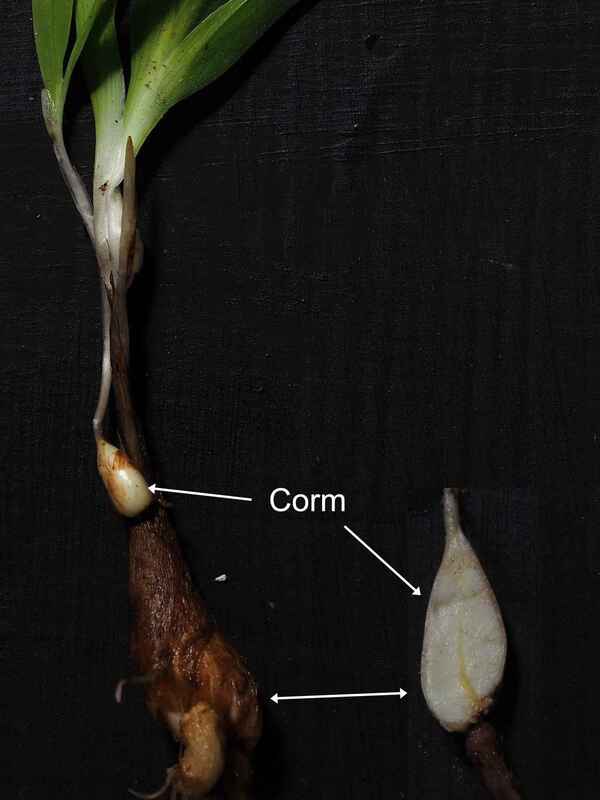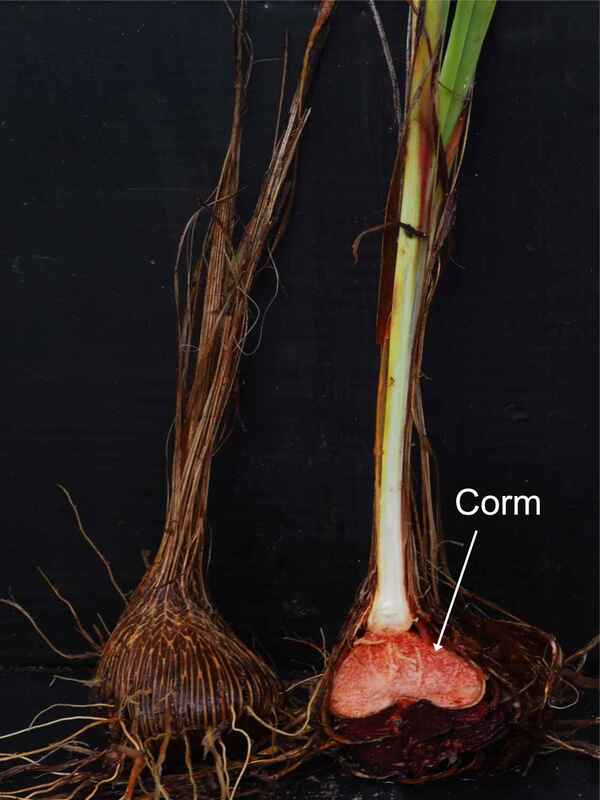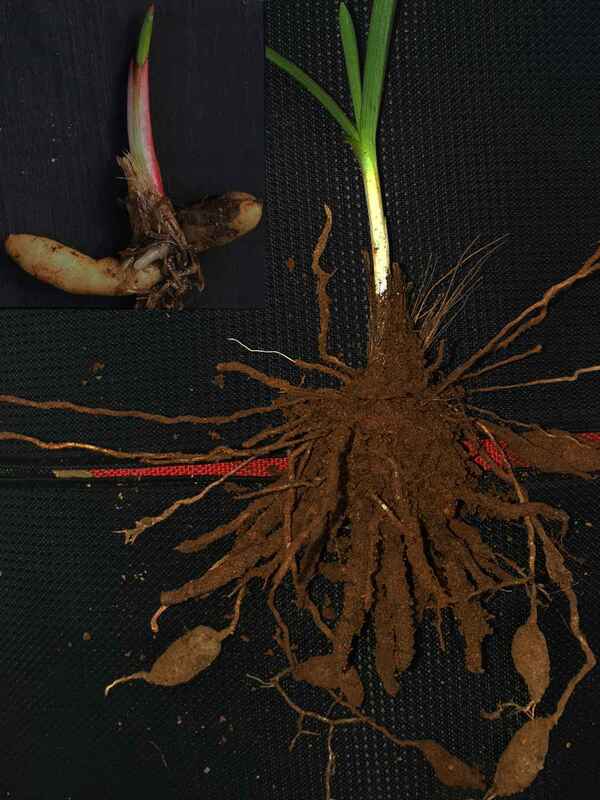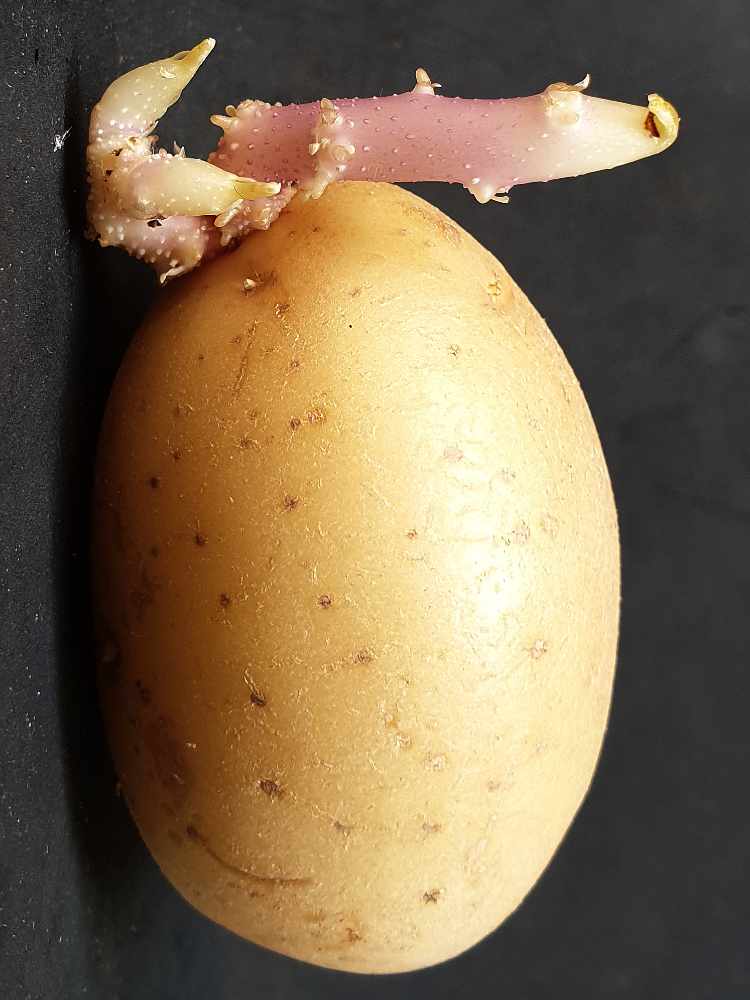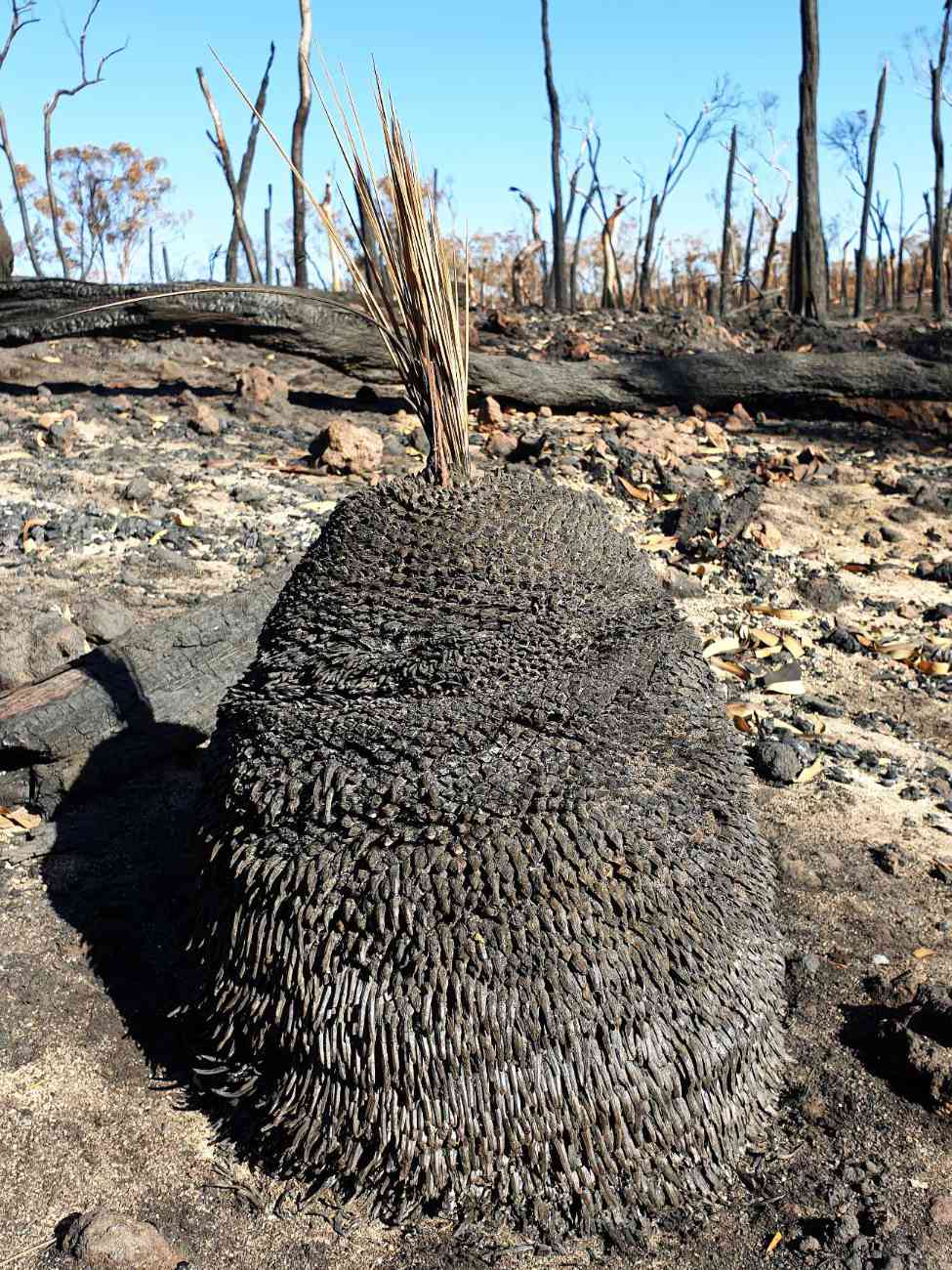Jumping spiders (family Salticidae) are miniature warriors of the spider world. They have the most species of the spider families and are very common, but are seldom noticed because they are so tiny.
Jumping spiders are tiny day-active hunters that will tackle prey several times their size. They are the most intelligent and endearing of spiders, which will stand their ground and rear up when disturbed. Jumping spiders have outstanding eyesight.. The large, centre pair of eyes faces straight forward, giving the spider excellent resolution, and they have good color vision.
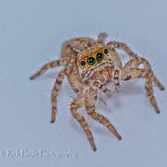
Narrogin species are generally tiny and drab, but make up for this with their interesting behaviour. Myrmarachne species are ant mimics/ant hunters. They tend to wave their front legs in the air to simulate antennae, and many have bodies that also closely resemble ants.
| Jumping spiders generally rest and produce their eggs in a small webbed sac in the leaf litter and under bark. In some species the male matures faster than the female and at maturity searches for a prepubescent female. After finding one he builds her a shelter web and guards her other males until she is ready to mate. |
